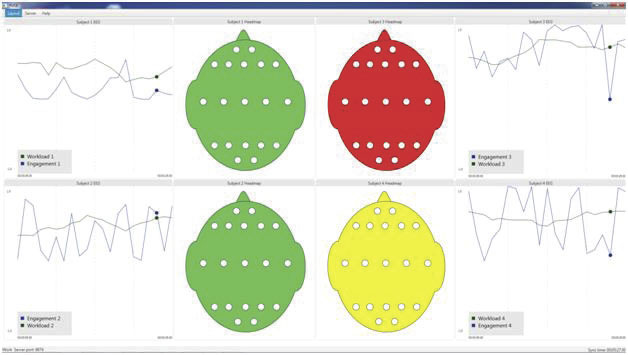
Fatigue is a primary contributor to transportation and industrial accidents in the US and has been increasingly recognized as a major public health concern. Electroencephalogram (EEG) and performance were quantified during vigilance and memory tests to objectively characterize neurocognitive impairments due to fatigue.
Sleep deprivation resulted in decreased visuospatial processing speed, recognition memory accuracy, and sustained attention based on AMP task performance. Performance decreases during sleep deprived sessions were coupled with significant changes in EEG classification metrics. EEG-Engagement decreased while EEG-distraction and EEG-drowsiness increased. Thus, EEG classification metrics proved to be accurate indicators of fatigue-related neurocognitive impairments in healthy participants, allowing for a more comprehensive assessment of fatigue.
Prototype implementation of real-time visual graphic display of the ABM cognitive state metrics including engagement, drowsiness, mental workload, and stress levels of Air Traffic Controllers during actual work hours at one of the busiest airports in the world. These EEG-based metrics displays were designed for the supervisors to monitor up to four air traffic controllers during their normal work operations. If episodes of fatigue, excessive workload or distraction were observed(red color), the supervisors could re-assign tasks to other team members or provide breaks or rest periods as needed.






